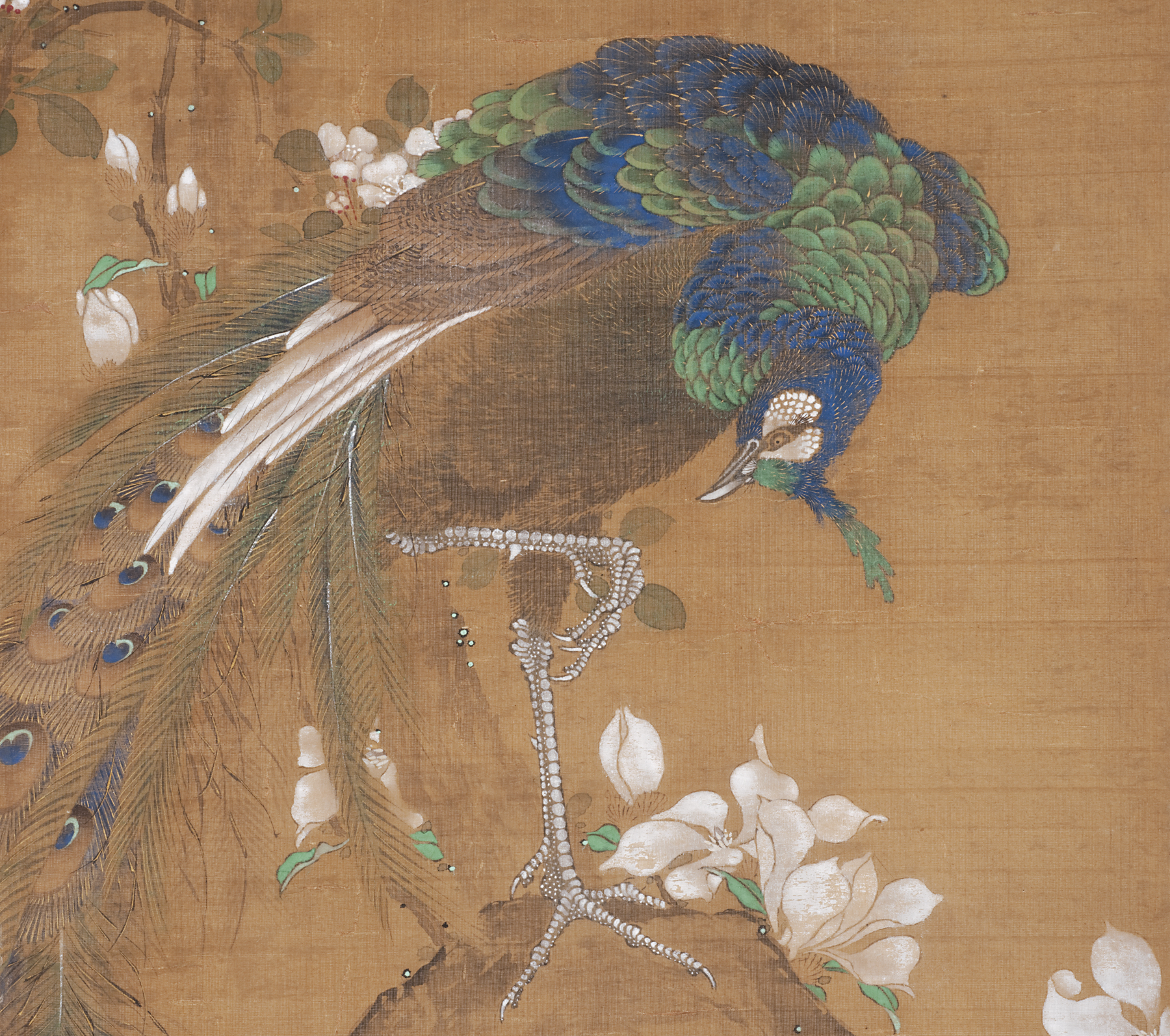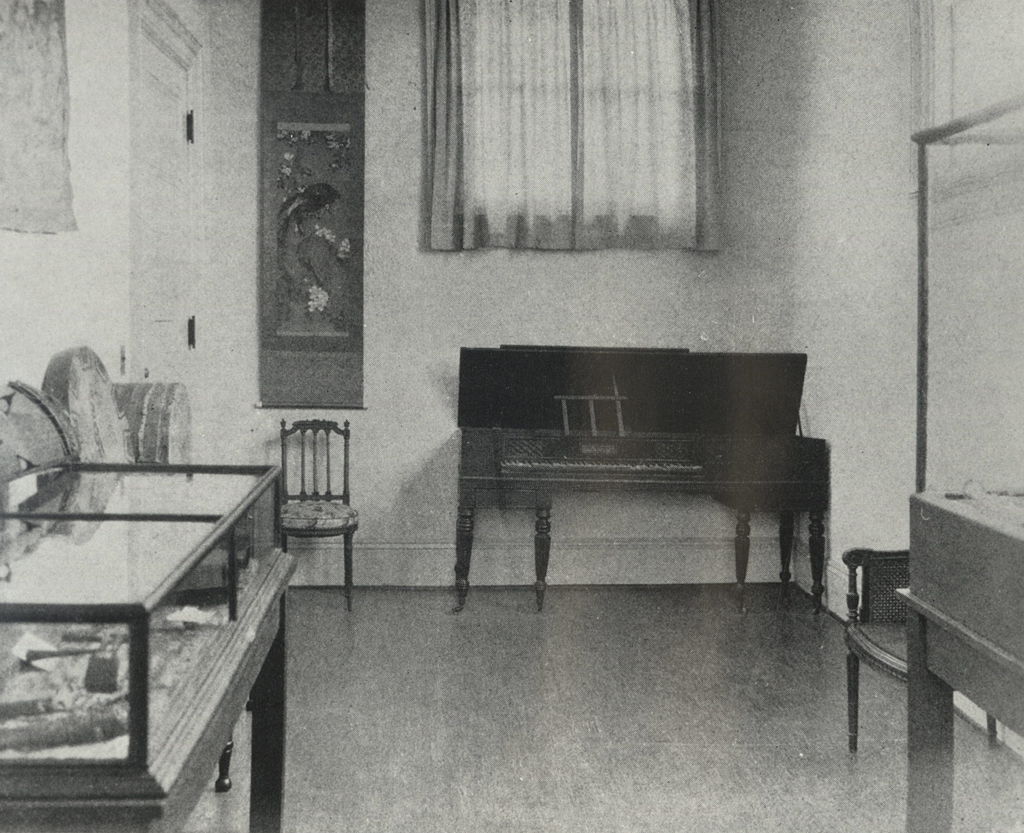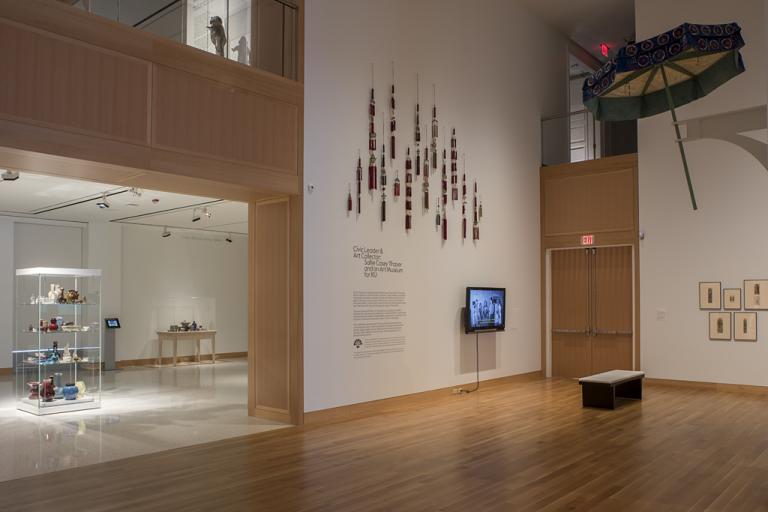Exhibition Label:
Asian Gallery, Summer 2003, Youmi Efurd (Didactic panel)
Flora & Fauna
Chinese bird-and-flower painting, fostered by imperial patronage, flourished during the Song dynasty (960-1297). The Song emperor Huizong (r. 1101-1126) himself was a painter of flower and bird subjects of considerable renown, and under his patronage the Court Academy fostered the tradition as never before, or indeed since. Huizong’s preference was for the most literal renderings of the details of nature.
The notion of the Court Academy, which had been established by Huizong in the Song, was restored in the Ming dynasty (1368-1644). The early Ming Academy of painters reinvigorated the genre of flower and bird painting—adopting the Song style of rendering images in meticulous detail—which continued into the Qing dynasty (1644-1911).
In Chinese tradition, the meaning of the flower and bird symbolism is multi-layered. It could be aesthetic, philosophical, religious, and even political, according to the context. The motifs of plants and birds could be used to express an endless range of meanings and sentiments.
Chinese bird-and-flower painting was transmitted to Japan by Chinese visitors during the Edo period (1615-1868). As so often happened in Japanese cultural history, native artists made new combinations of traditions that had been kept distinct in China. Academic and literati influences from China were often mixed together with the Japanese preference for dramatic asymmetrical compositions and evocative brushwork. This led to a new form of bird and flower painting that owed much to China and yet was fully expressive of the Japanese spirit.
Archive Label 2003 (version 1):
Inspiration for this work by Shūki comes from the academic tradition of Chinese bird and flower paintings. Requisite elements of that tradition were colorful, elegant effects and naturalistic representation. Peacock on a Rock is a beautiful example of the bird-and-flower painting style. The contrast of the forms that are rendered in pure ink, such as the rock, tree trunk, and the bird’s breast with fully colored forms, and a flat, slightly abstracted design are part of that style, nicely executed here.
Peonies, appearing at the base of the painting’s rock, are traditionally paired with peacocks. East Asian tradition has it that peacocks eat poisonous snakes. This colorful bird raises one of its pearly talons and seems to inspect it as though that task could be undertaken. It was also believed that peacocks avert natural disasters. They are symbols of immortality, making their pairing with peonies, symbols of good fortune, an auspicious combination. Peonies also represent the spring season.
Exhibition Label:
Asian Gallery, Summer 2003, Youmi Efurd
Though claiming to follow the literati tradition of China, some Nanga (Southern School) painters, who were based on Chinese literati style, were influenced by the Chinese bird-and-flower paintings of the academic tradition as well.
While following the basic stylistic traits of the Chinese artist, Shūki adds a flat and abstracted design quality to the composition. The fully blossoming tree, the rock that is suspended in space, the rootless flowers, and the tail feathers of the peacock, all particularly cut off by the edges of the scroll, seem to exist on a single plane. This compositional device enhances the dynamic thrust of the painting.
This painting illustrates the complexities involved in defining the stylistic characteristics of the Nanga School of painting in Japan. Borrowing from both literati and academic Chinese sources, the Nanga artists often added visual elements from their own artistic heritage to produce works in a range of theme and styles. Such is the case with Shūki.
Archive Label date unknown:
Though claiming to follow the literati tradition of China, some Nanga painters were influenced as well by the Chinese bird and flower paintings of the academic tradition, which emphasized colorful, elegant effects and naturalistic representation. Shūki shows this inspiration in the techniques used for this highly ornate work.
Archive Label date unknown:
Ryūsen was predominantly influenced by Chinese paintings of birds and flowers, particularly those of the Ming dynasty (1368-1644). This Chinese painting tradition is characterized by bold colors and lavishly detailed images that often have symbolic associations. Ryūsen skillfully contrasts a large rock and tree painted in ink with brilliantly colored plumes and the fragile beauty of spring magnolia, peony and cherry blossoms.
Ryūsen created several paintings of peacocks, though it is not understood if this bird held any particular significance for him or his patrons. In East Asia, peacocks are considered auspicious an dare thought to eat poisonous snakes and prevent natural disasters. They are thus symbols of good fortune and are often paired with peonies, which represent wealth and fortune.














